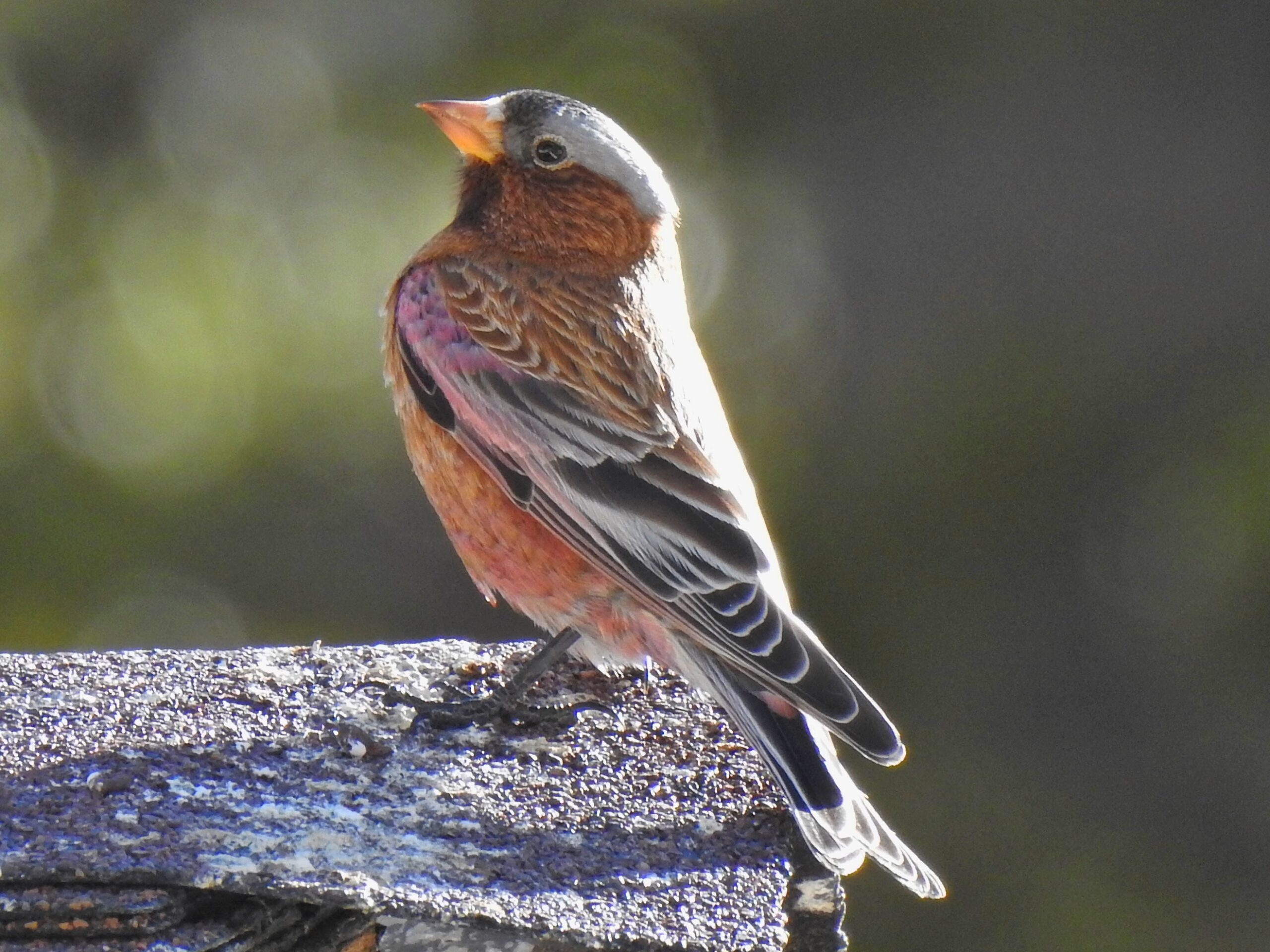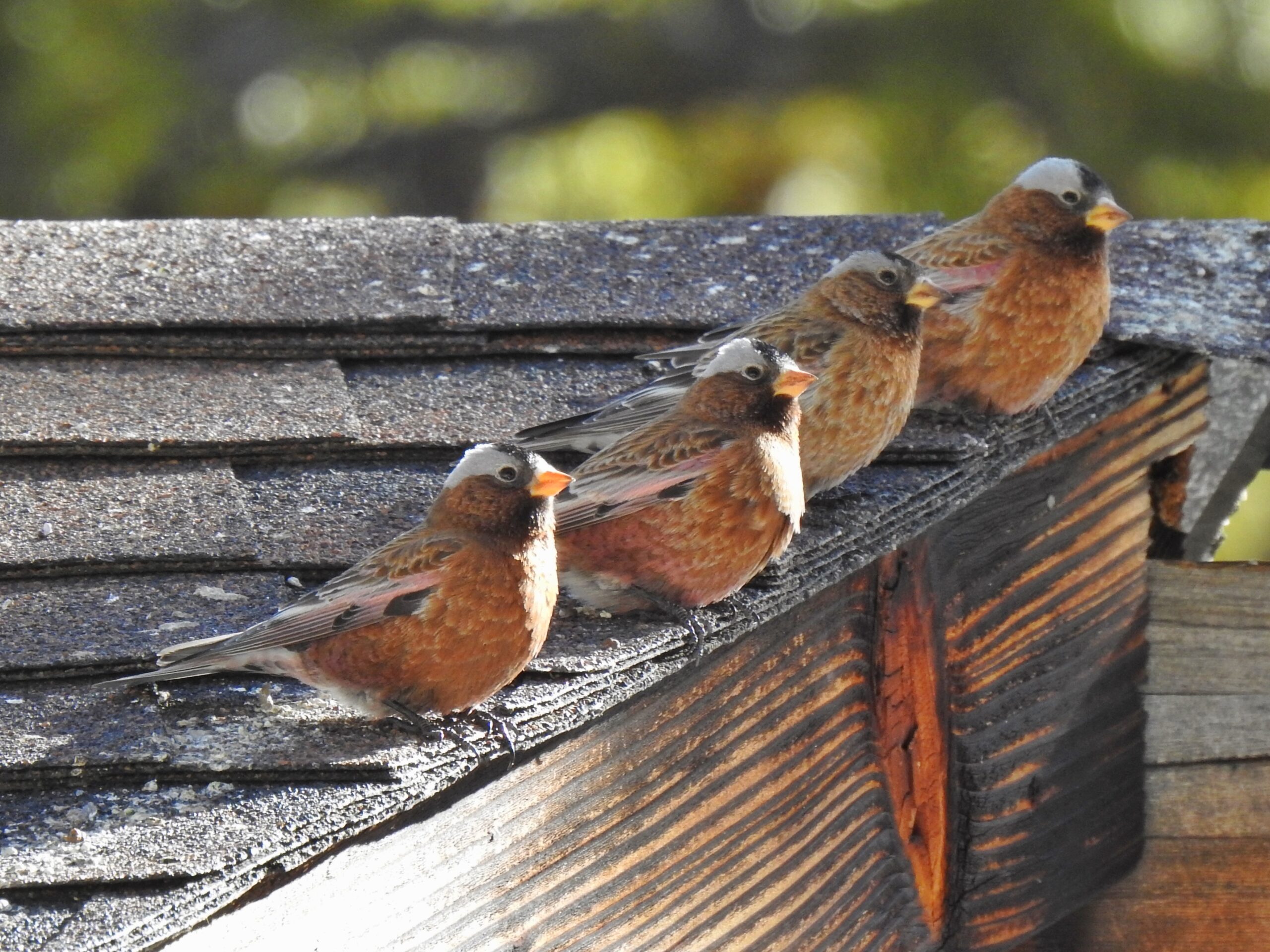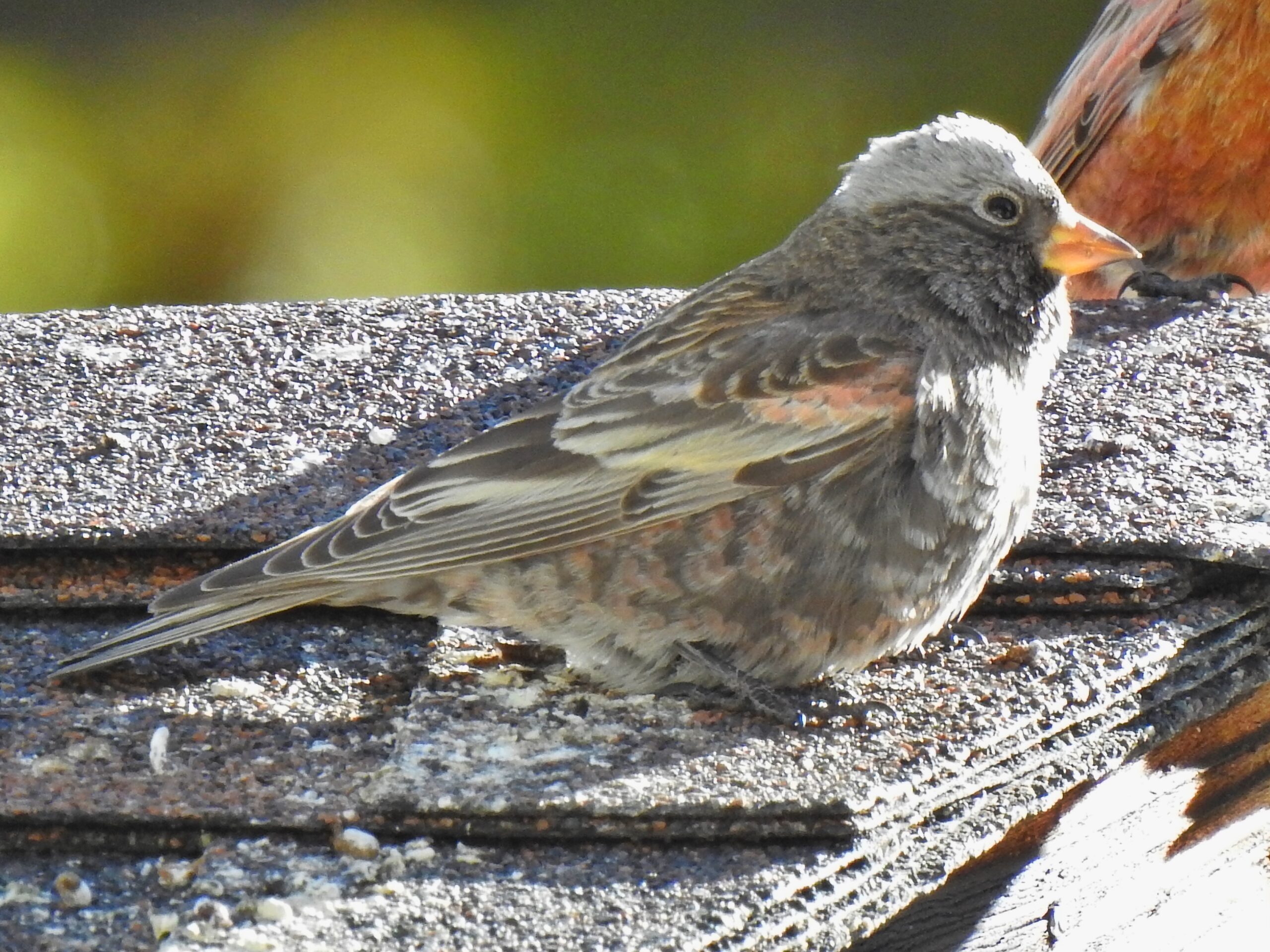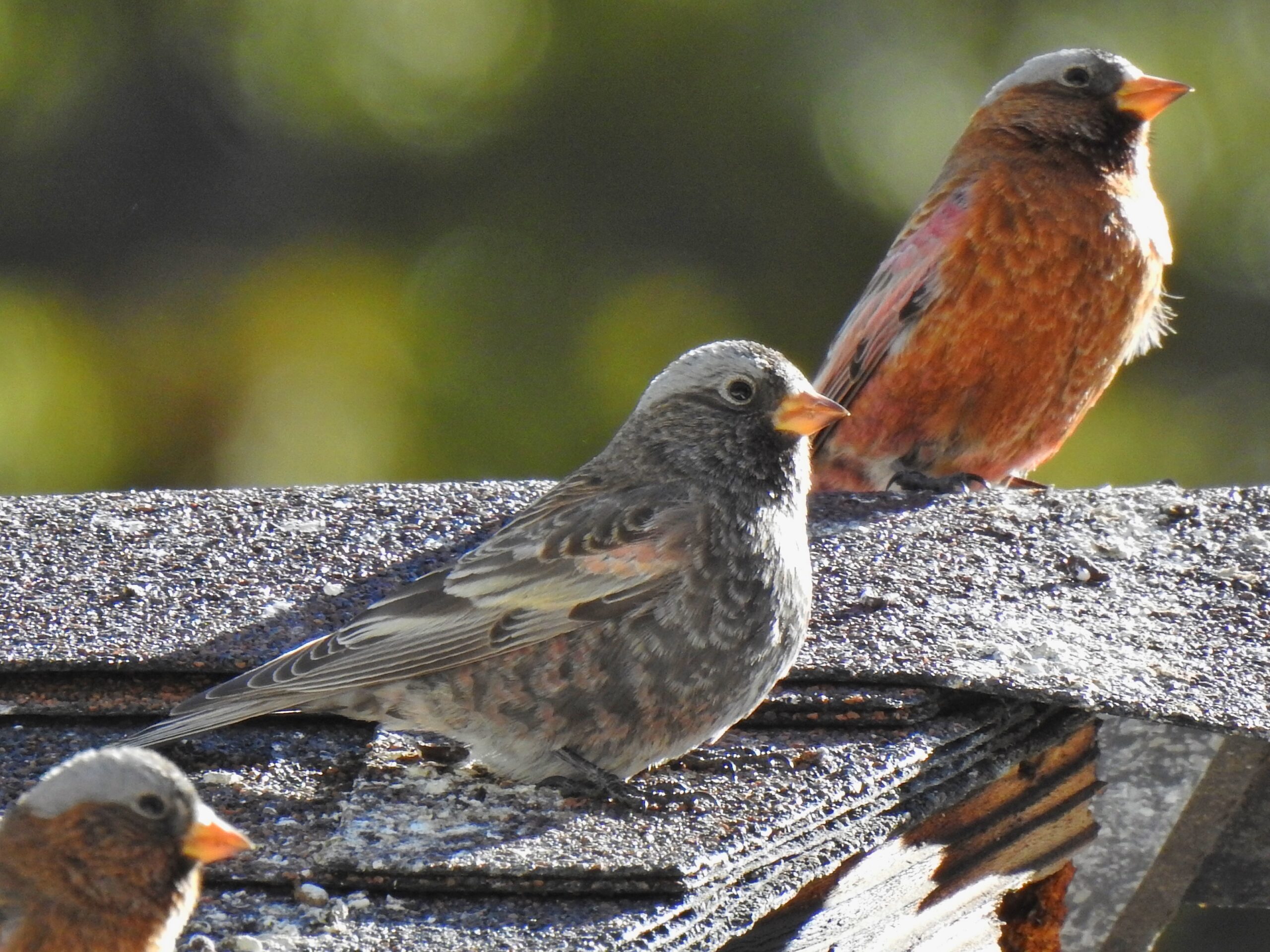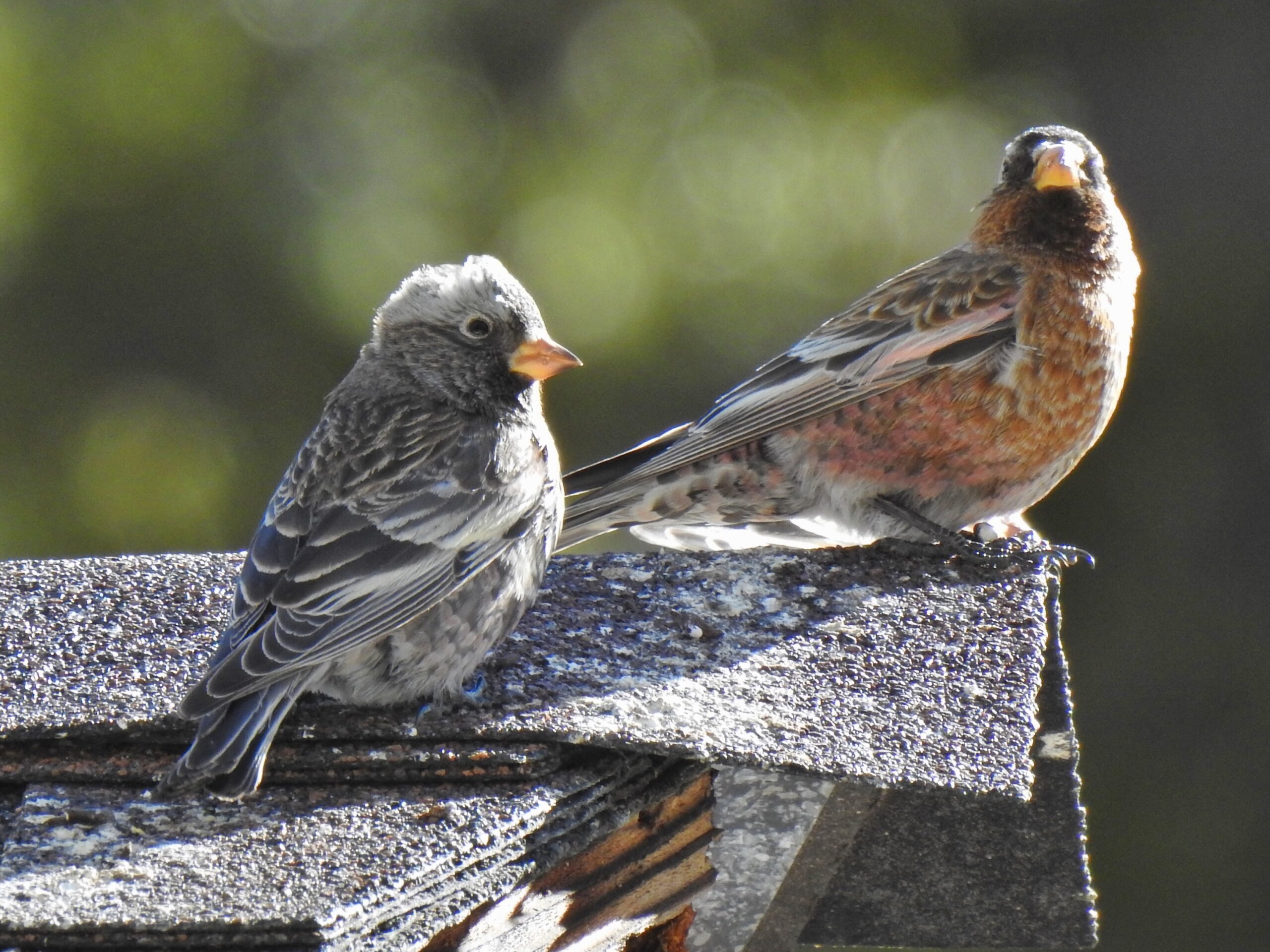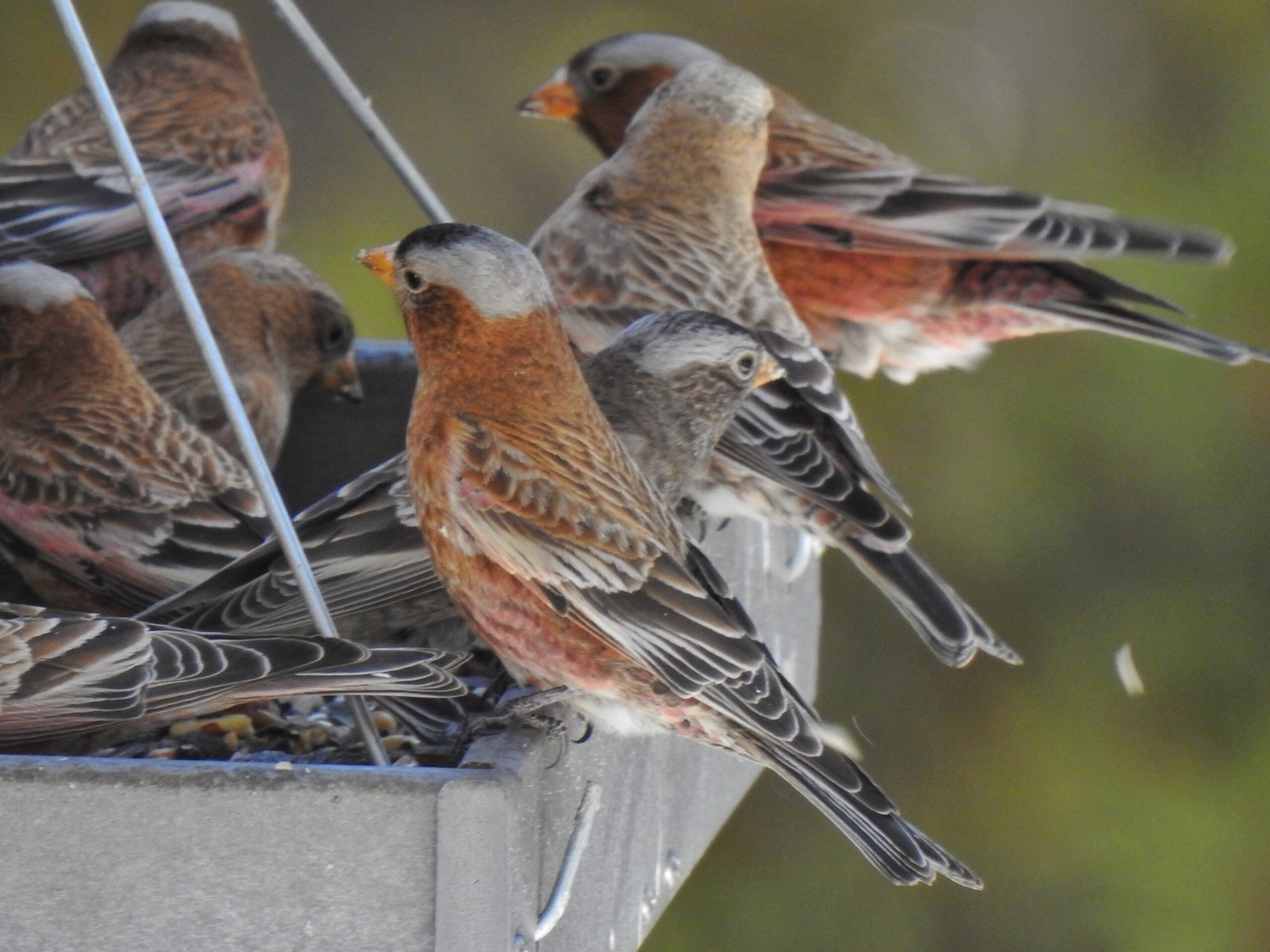With the possibility that we may move before next winter, I am very aware that this year may be my last opportunity to see some western birds. With that in mind, and with no interest in spending another day in Pueblo or Fountain, I looked on eBird for a place where rosy-finches and Pine Grosbeaks were recently reported. The closest location with any real promise was in the community of Alice, about 10 miles northwest of Idaho Springs. The “hotspot” was listed as “private but with public access,” which I took to mean feeders outside the house of someone who didn’t mind people standing in their yard.
And that’s what it turned out to be. It took me about two hours to drive to the small, unincorporated community, which sits at 10,000 feet. The wind was howling when I arrived. It even knocked me off balance a few times when I wasn’t braced. The house was in a pine forest, which cut the wind some, but it was decidedly chilly. I parked at the top of the driveway and walked down the slope to a spot from which I could see the feeders. It didn’t look like they’d been filled anytime recently, but there was still some feed left. I never saw a person in or around the house.
I stood and waited about 15 minutes, seeing nothing except a few Mountain Chickadees. Finally, a small flock of rosy-finches showed up. In my limited experience with rosy-finches, they don’t fly directly to feeders. They stage in nearby treetops for anywhere from 5-15 minutes, then fly to the rooftop near the feeder, and then swarm the feeders. Then they suddenly flush and disappear over the trees for maybe 10 minutes before repeating the behavior. That’s exactly what these did. I stuck around for about an hour and a half, and I think the flock came and left five times. Two of the times they flushed it was because of a Sharp-shinned Hawk that hung out nearby and kept crashing the party. I think the second time he attacked, he may have gotten a finch. I think I saw something dark in its talons as it flashed away through the pine. (Interestingly, over the next few weeks, the Gray-crowned and Brown-capped Rosy-Finches continued to be seen at this location, but the Black Rosy-Finch was not seen again.)
The flock consisted mostly of Gray-crowned Rosy-Finches, with at least one Hepburn’s type mixed in. There were three or four Brown-capped Rosy-Finches and a Black Rosy-Finch, probably a first-winter bird because it was more gray than black.
I hung around a while in hopes that the Pine Grosbeaks would show, but no luck. Apart from the rosy-finches and chickadees, the only bird I saw on the feeders was a White-breasted Nuthatch. A Clark’s Nutcracker spent about 10 minutes surveying the area from the very top of a nearby pine, but that was about it for excitement. Still, if this is the last time I ever get to see rosy-finches, I got a good view and some decent photos.
Gray-crowned Rosy-Finch. All the finches spent a lot of time with their heads tilted to watch the sky, probably because of the Sharp-shinned Hawk.
All Gray-crowns — the one in the foreground with the gray cheeks is a Hepburn’s. While the Gray-crowned type nests in the Rocky Mountains from Alaska to Montana, Hepburn’s nests in the coastal ranges.
The middle bird is a Brown-capped Rosy-Finch, probably a first-winter bird.
Three looks at the Black Rosy-Finch.
In this feeder shot, all three species are lined up on the right, showing the subtle differences. The one in the foreground is a Gray-crowned Rosy-Finch. Next is the Black Rosy-Finch (facing right). The next bird is a Brown-capped Rosy-Finch (facing away). There may be a second Brown-capped down in the tray, facing away — the one with little contrast between the brown neck and gray cap.

